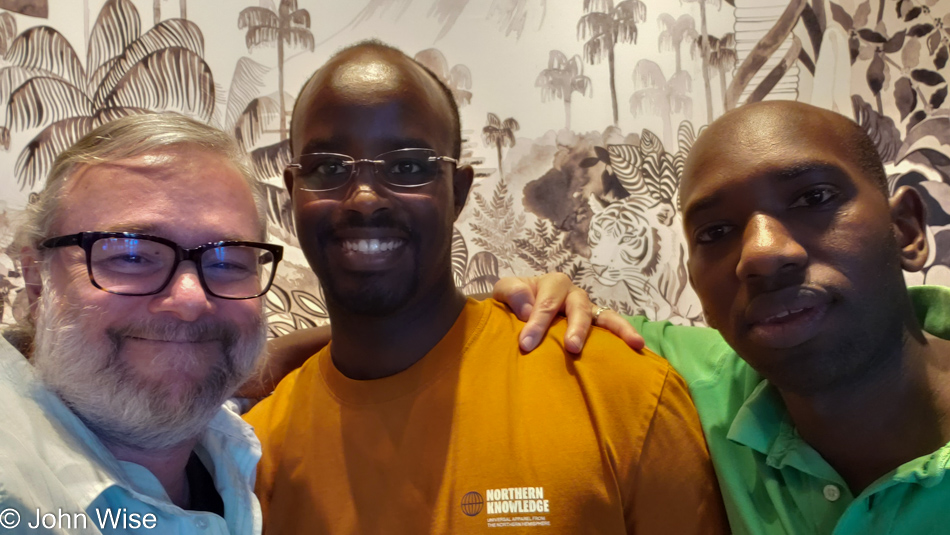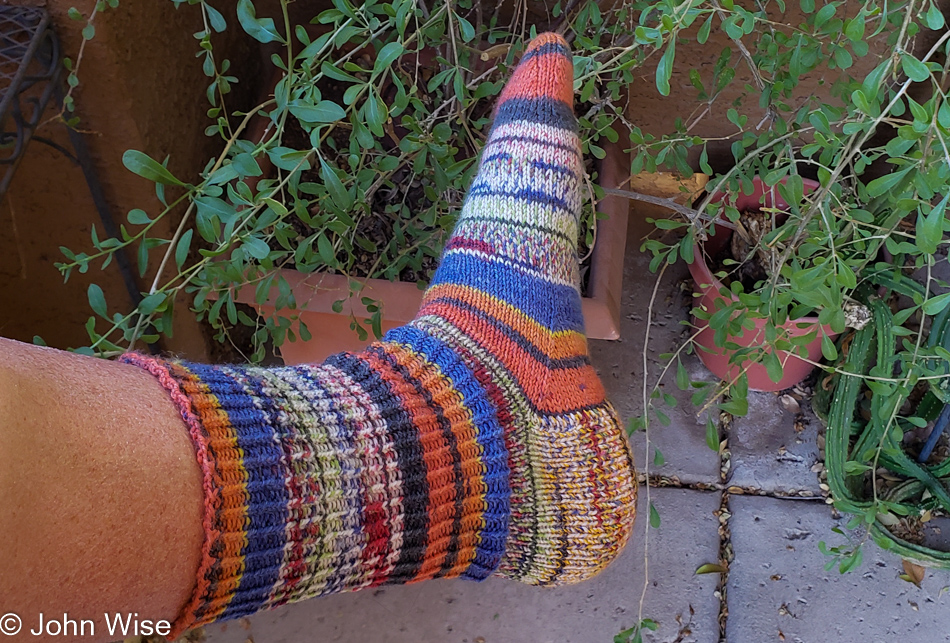
You never know what will come into your life if you don’t follow your instinct to reach out and so it was that today I found a valid moment of being thankful on Thanksgiving. My conversation started with Theo who stands in the middle in this photo. Theo entered my attention due to the word “KNOWLEDGE” emblazoned across the back of his t-shirt. He was here at this mostly empty Starbucks on a major holiday that invites people to enjoy a day of nesting with family, yet instead came here alone. After 5 minutes of dithering whether I should intrude, I did just that and asked if he was an artist. He laughed, “No, but the friend I’m meeting here any moment is; he’s a writer.”
Theo and I continued chatting as we spoke about him coming from Burundi, my time in Europe, and being thankful every day for the incredible luxury we are afforded by living in America. Then the friend he’s waiting for walks through the door and joins him ,and I’m introduced to Pacifique (pictured on the right) who also hailed from Burundi. For close to a half-hour we talked about the importance of every day being worthy of a holiday and of friendship that should mean something more than simply social media contacts.
Getting to Pacifique being a writer, I’d already learned that he would have a book coming out but the few details I knew I had been told by Theo prior to his friend’s arrival so it was time to ask Pacifique to share more about it. The book’s title is The Tears of a Man Flow Inward, and it is due to release next March. “Is it available on Amazon as a pre-order yet?” Yes, was his answer and so without learning more I grabbed my notebook and did a quick search for The Tears of a Man Flow Inward: Growing Up in the Civil War in Burundi by Pacifique Irankunda due for release on March 15, 2022. I was immediately struck by the serious tone of the part of the title Pacifique hadn’t mentioned and, without a second thought, I ordered it but was seized by the potential for it to be an emotional storytelling.
Then, just as I thought our ways were about to part, Pacifique joined me at my table asking me a few questions regarding my own path in life before he and Theo needed to head out. To say this was one of the best Thanksgiving’s ever would diminish that Caroline and I have shared thousands of Thanksgiving’s experiencing the flow of life, but this one certainly joins the ranks of the memorable.

